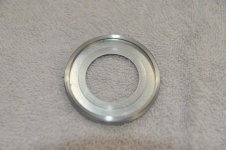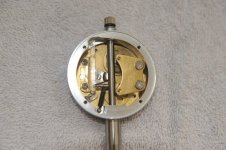rons
Diamond
- Joined
- Mar 5, 2009
- Location
- California, USA
I googled "teclock bezel removal". The very first hit was "hobby-machinist".
The first answer said to drill a small hole in the side and push/pry with a small screw driver or drill bit. (Jeez-us)
The second answer said to remove the back and remove a retaining bracket.
So I followed the back removal comment. (something I did before but forgot about it).
Is there any lube that should be applied to the gears. Or just leave it alone? I still would like to fix the problem
with the scale inside not moving so much. A rotation with slight pressure on the bezel ring, or just a slight pull does
not make the scale inside rotate much. Eventually it rotates into a position I like but not like it should.
Is there any small lube points that I should oil? And is there a way to make the scale move when I rotate the dial?
The first answer said to drill a small hole in the side and push/pry with a small screw driver or drill bit. (Jeez-us)
The second answer said to remove the back and remove a retaining bracket.
So I followed the back removal comment. (something I did before but forgot about it).
Is there any lube that should be applied to the gears. Or just leave it alone? I still would like to fix the problem
with the scale inside not moving so much. A rotation with slight pressure on the bezel ring, or just a slight pull does
not make the scale inside rotate much. Eventually it rotates into a position I like but not like it should.
Is there any small lube points that I should oil? And is there a way to make the scale move when I rotate the dial?




